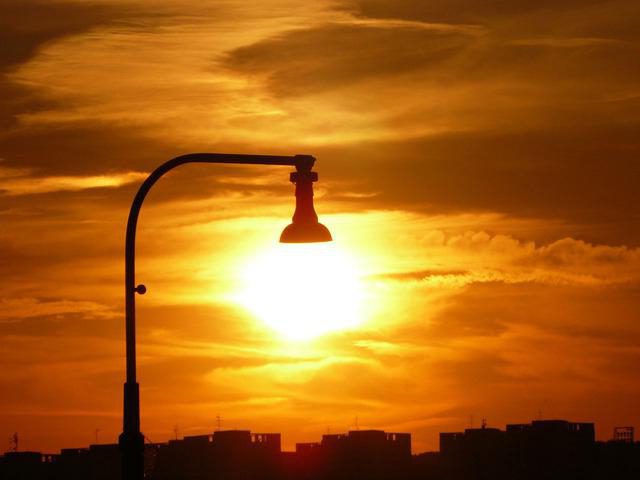How long is daylight at the equator? Daylight hours: duration by month.
The benefits and necessity of sunlight for the human body are not in doubt. Any of us knows that without it it is impossible to exist. In winter, we all experience a more or less severe deficiency of it, which negatively affects our well-being and undermines our already unstable immunity.
What happens to daylight hours?
With the onset of the cold season, daylight hours, the duration of which is rapidly decreasing, are increasingly losing ground. The nights become longer and longer, and the days, on the contrary, become shorter. After the winter equinox the situation begins to change in reverse side, something most of us look forward to. Many people want to accurately navigate the duration daylight hours currently and in the near future.
As is known, the number of daylight hours in a day begins to increase at the end of the so-called winter solstice. At its peak, daylight hours are recorded annually, the duration of which is the shortest. From a scientific point of view, the explanation lies in the location of the sun at precisely this time at the most distant point in the orbit of our planet. This is influenced by the elliptical (i.e. elongated) shape of the orbit.
In the northern hemisphere it happens in December and falls on the 21st-22nd. A slight shift in this date depends on the dynamics of the Moon and shifts in leap years. At the same time, the southern hemisphere is experiencing a reversal period summer solstice.
Daylight hours: duration, timing
A few days before and after the date of each solstice, the daylight does not change its position. Only two or three days after the end of the darkest day does the light period begin to gradually increase. Moreover, at first this process is practically invisible, since the increase occurs only for a few minutes a day. In the future, it begins to brighten faster, this is explained by an increase in the speed of solar rotation.
In fact, the increase in the length of daylight hours in the northern hemisphere of the Earth begins no earlier than December 24-25, and it occurs until the date of the summer solstice. This day alternately falls on one of three: from June 20 to June 22. An increase in daylight hours has a noticeable effect positive effect on the state of people's health.

According to astronomers, the winter solstice is considered the moment the sun reaches its lowest angular height above the horizon. After it, within a few minutes the sunrise may begin even a little later (by a few minutes). An increase in the length of daylight hours is observed in the evenings and occurs due to an increasingly later sunset.
Why does this happen
This effect is also explained by the increase in the speed of the Earth's movement. You can verify this by looking at the table showing sunrises and sunsets. As astronomers say, the day increases in the evening, but unevenly on both sides. The graph of daylight hours gives a clear idea of the dynamics of this process.
Every day the sunset shifts by a few minutes. Accurate data can be easily tracked using the appropriate tables and calendars. As scientists explain, this effect is caused by a combination of the daily and annual movements of the sun across the sky, which is slightly faster in winter than in summer. In turn, this is caused by the fact that, rotating at a constant speed around its own axis, the Earth winter time is located closer to the Sun and moves in orbit around it a little faster.
The elliptical orbit along which our planet moves has a pronounced eccentricity. This term denotes the amount of elongation of an ellipse. The point of this eccentricity that is closest to the Sun is called perihelion, and the most distant point is called aphelion.

Kepler's laws state that a body moving in an elliptical orbit is characterized by maximum speed at those points that are as close as possible to the center. That is why the movement of the sun across the sky in winter is slightly faster than in summer.
How does the Earth's orbit affect climate?
According to astronomers, the Earth passes the perhelion point on approximately January 3, and aphelion on July 3. It is possible that these dates may change by 1-2 days, due to the additional influence of the Moon's movement.
The elliptical shape of the Earth's orbit also affects climate. During winter in the Northern Hemisphere, our planet is located closer to the Sun, while in summer it is further away. This factor makes the difference between climatic seasons our northern hemisphere.
At the same time, in the Southern Hemisphere this difference is more noticeable. As scientists have established, one revolution of the perihelion point occurs in approximately 200,000 years. That is, in about 100,000 years the situation will change to the exact opposite. Well, we'll wait and see!
Give me sunshine!
If we return to current problems, the most important thing for us is the fact that the emotional, mental and physical state of the inhabitants of the Earth improves in direct proportion to the increase in the duration of daylight hours. Even a slight (several minutes) lengthening of the day immediately after the winter solstice has a serious moral effect on people tired of the dark winter evenings.

Medically, positive influence sunlight on the body is explained by an increase in the production of the hormone serotonin, which controls the emotions of happiness and joy. Unfortunately, it is produced extremely poorly in the dark. That is why increasing the duration of the light interval by influencing the emotional sphere leads to general improvement well-being and strengthening human immunity.
A significant role in the sensations of each of us is played by daily internal biorhythms, which are energetically tied to the alternation of day and night that has continued since the creation of the world. Scientists are confident that our nervous system can work adequately and cope with external overloads only by regularly receiving a very specific dose of sunlight.
When the light is not enough
If there are not enough sun rays, the consequences can be the saddest: from regular nervous breakdowns to serious mental disorders. With an acute lack of light, a real depressive state can develop. And seasonal affective disorders, which are expressed in depression, bad mood, and a general decrease in the emotional background, are observed all the time.
In addition, modern city dwellers are subject to another misfortune. Daylight hours, which are too short for modern city life, require adjustment. We are talking about a huge, often excessive amount artificial lighting, which almost any resident of the metropolis receives. Our body, unadapted to such quantity artificial light, is capable of getting confused in time and falling into a state of desynchronosis. This leads not only to weakening nervous system, but also to the exacerbation of any existing chronic diseases.

What is the length of the day
Let us now consider the concept of day length, which is relevant for each of us in the first days after the winter solstice. This term refers to the period of time that lasts from sunrise to sunset, that is, the time during which our star is visible above the horizon.
This value is directly dependent on the solar declination and the geographic latitude of the point where it needs to be determined. Near the equator, the length of the day does not change and is exactly 12 hours. This figure is borderline. For the northern hemisphere, in spring and summer the day lasts longer than 12 hours, in winter and autumn - less.
Autumn and spring equinox
Days when the length of the night coincides with the length of the day are called the days of the vernal or autumn equinox. This happens on March 21 and September 23 respectively. It is clear that the length of the day reaches its highest figure at the moment of the summer solstice, and the lowest - on the day of the winter.
Beyond the polar circles of each hemisphere, the length of the day goes off scale in 24 hours. It's about everything known concept polar day. At the poles it lasts as much as six months.

The length of the day at any point in the hemisphere can be determined quite accurately using special tables containing calculations of the length of daylight hours. Of course, this figure changes daily. Sometimes for a rough estimate he uses such a concept as average duration daylight hours by month. For clarity, let's consider these numbers for that geographical point, where the capital of our country is located.
Daylight hours in Moscow
In January, daylight hours at the latitude of our capital average 7 hours 51 minutes. In February - 9 hours 38 minutes. In March its duration reaches 11 hours 51 minutes, in April - 14 hours 11 minutes, in May - 16 hours 14 minutes.
Over the three summer months: June, July and August, these figures are 17 hours 19 minutes, 16 hours 47 minutes and 14 hours 59 minutes. We see that it is June, which corresponds to the summer solstice.
In autumn, daylight hours continue to decrease. In September and October, its duration is 12 hours 45 minutes and 10 hours 27 minutes, respectively. The last cold dark days - November and December - are famous for their record short light days, the average day length of which does not exceed 8 hours 22 minutes and 7 hours 16 minutes, respectively.
All living organisms have a need for sunlight and feel its lack in those seasons when the days are shortened and the nights are lengthened. Any cycle has critical points of change in the nature of the cycle. In the cycle of changes in the length of daylight hours, the days of the equinox (autumn and spring, distinctive feature which - the length of day and night is equalized), the days of the solstice (summer with the longest and winter with the shortest daylight hours).
When does daylight increase?
The hour and day of each critical point shifts depending on the phases of the Moon and leap year shifts. In 2015, the day of the winter solstice, Greenwich time, in the northern hemisphere of our planet begins at 4 o'clock. 48 min., in 2016 December 21 at 10 o’clock. 44 min., in 2017 December 21 at 16.00. 28 min. During these days and hours, the Sun crosses the farthest point of the Earth's elliptical orbit, resulting in the shortest daylight hours. In the southern hemisphere of the Earth, the summer solstice begins at this time.
The phase of increasing daylight hours begins with the winter solstice and ends with the summer solstice. The intensity of the increase in daylight hours depends on the angle of declination of the Sun and the speed of its rotation. Almost the day in the northern hemisphere begins to increase on December 24-25 by several minutes per day, then the intensity of the increase in day length increases. In 2016, March 20 at 4 o'clock. 30 min. the length of the day equalizes with the length of the night, reaching the second critical point of the cycle - the spring day, reaching 09/22/2016 at 14:00. 21 min. day autumn equinox, i.e. equalizing the length of day and night. The cycle of changing day length ends at the new point of the winter solstice on December 21, 2016, having reached the minimum day length.
The critical points of the cycle are the actual characteristic points of the change of seasons. Ancient holidays were celebrated on these days. December 20 was considered the last day of autumn, and on December 21 they celebrated the Solstice and Kolyaden - the day of the beginning of winter, the new year and the Christmas of the god Kolyada, who embodied the Sun. Christmastide was celebrated for 21 days with the decoration of huts with dolls of the god Veles (the current Father Frost) and the Snow Maiden and the singing of carols. IN magical days On Christmastide, people predicted crop yields, dates of wars and weddings, and commemorated the dead. Germanic tribes celebrated Yule ( New Year). Other critical days daylight cycle has also been associated with folk holidays, because ancient farmers and pastoralists were completely dependent on the changing phases of natural cycles.
Video that explains everything in detail
Nowadays, they are trying to link the change in the length of daylight hours with economic feasibility– subjectively moving the clock hands 1 hour forward or backward in the appropriate phases of the daylight cycle to save energy. As the practice of the last two decades has shown, subjective interference in natural astronomical processes leads to disastrous results. 1% of energy savings costs the countries carrying out this experiment a massive increase in the number of injuries, suicides, exacerbation of chronic diseases, conflict situations and other equinoxes. From this point on, the length of the day continues to increase, but the intensity of the increase gradually decreases. 06/20/2016 at 22 hours 34 minutes the Sun crosses the closest point of the Earth's elliptical orbit, the length of the day reaches the 3rd critical point of the cycle - for the summer solstice with the maximum day length. From this point, the length of the day begins to decrease,
health problems caused by disruption of the daily routine. Most countries, based on statistical data and conclusions of scientists, abandoned the dubious experiment; Ukraine is not yet one of them. There remains hope that the transition of Ukraine to winter time in 2015 will end this cycle of experiments that are harmful to the health of the population.
Daylight is the time from sunrise to sunset. Depending on where the Earth is in its orbit as it revolves around the Sun, the length of daylight hours also changes. The longest daylight is June 21, on this day its duration is 16 hours. The shortest day, which lasts only 8 hours, falls on December 21 or 22, depending on whether the year is a leap year. In the fall on September 21 and in the spring on March 21, nature celebrates the days of the autumn and spring equinox, when the length of daylight is equal to the length of night - the time from sunset to sunrise.
The length of daylight determines the annual cycle, which governs all life on planet Earth. At the same time, as the length of daylight hours changes, one season changes another: spring is followed by summer, autumn, winter and spring again. This dependence can be seen especially clearly in the example of plants. In the spring, as the length of daylight increases, sap flow begins in them; in the summer you can observe their blossoming, in the fall - withering, and in the winter - suspended animation, a sleep similar to death. But, perhaps not in such an obvious form, the length of daylight also affects a person.
The influence of daylight hours on humans
Man, as part of the planet's biosphere, is also sensitive to how long daylight hours last, despite the fact that his life pattern is subject to the daily work rhythm. Nevertheless, medical studies have confirmed that in winter the metabolic rate in the human body decreases, resulting in increased drowsiness and the appearance of excess weight.Lack of sufficient quantity natural light also affects the psycho-emotional state. In winter, as well as at the beginning of spring, many people complain of depression, bad mood, headaches, insomnia and irritability. Dysfunction of the nervous system provokes disruptions in the functioning of other organs and systems. The synthesis of natural vitamin D in the body decreases, which entails a decrease protective properties immune system, therefore, the total number of diseases and exacerbations of chronic pathological processes at this time of year is the highest. Doctors advise at the end of winter - beginning of spring to get out into nature at least on weekends, spend more time during the day on fresh air, this will help cope with bad mood and improve overall well-being.






